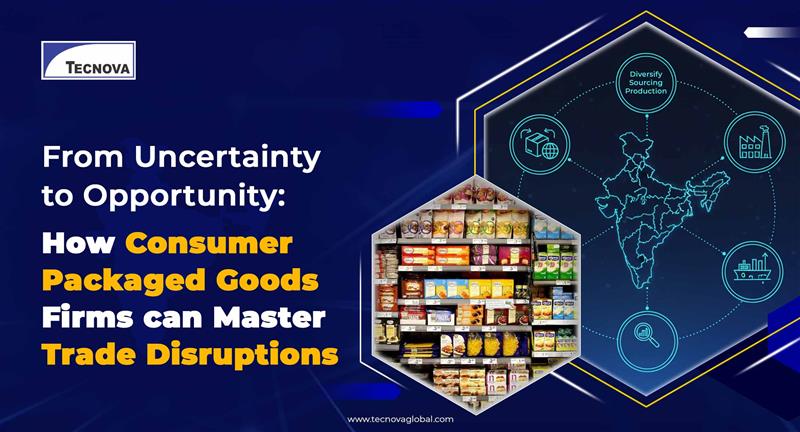India Market Entry Guide for European Companies: Avoid One-Size-Fits-All Mistakes
- Regulatory Complexity: India's multi-layered compliance framework requires state-specific strategies, not blanket approaches. Each sector has unique licensing requirements.
- Cultural Adaptation: European business models need localization. Consumer behavior, pricing sensitivity, and relationship-building vary dramatically across regions.
- Supply Chain Diversity: One-size-fits-all logistics fail. India demands flexible, multi-modal supply chains adapting to infrastructure gaps and regional variations.
- Talent Management: Hiring practices differ significantly from Europe. Understanding local labor laws, compensation expectations, and retention strategies is critical.
- Market Segmentation: India isn't a single market—it's 28+ distinct markets. Tier-1 cities demand different strategies than Tier-2/3 regions.
Tecnova's Approach: We craft customized market entry strategies based on your industry, scale, and objectives—ensuring sustainable growth without costly trial-and-error.
Essential Lesson: Success in India requires tailored strategies, not templates.
Why One-Size-Fits-All Fails in India: Lessons from European Companies
Have you ever wondered why a one-size-fits-all approach works efficiently in other nations but flops in India?
According to recent research, only 3 manufacturing companies entered India in FY25 compared to 53 companies in the services sector in the last fiscal year.
With more than 400 million consumer-class population, a 27% CAGR of the Indian e-commerce industry, and a USD 100 billion investment agreement with the European Free Trade Association (EFTA), the growth opportunity in India is massive.
Still, many European companies struggle in India. Let us find out the reason in this blog.
Why did the European Approach fail in India?
Most European companies stick to their global model with minimal adaptation while doing business in India. This one-size-fits-all approach would have worked well if there were similar consumer preferences, regulatory landscapes, and business cultures across the globe. However, that is not the case!
In 2025, over 52% of Indian consumers have shifted to private labels. As per them, local brands meet their needs more precisely than foreign enterprises.
Similarly, many European auto brands have failed to increase their sales in India since FY22. Because they adopted a one-size-fits-all solution: remaining heavily focused on Sedans while Indian preferences were sub-4-metre vehicles and SUVs. Additionally, the narrow dealer network of the European autobrands left Tier 2 and 3 Indian cities unserved, preventing a wide consumer base from accessing their product range.
The collapse of the one-size-fits-all business approach in India is not restricted to automotive brands only. As per a recent report by the Ministry of Corporate Affairs, 5,228 foreign companies were registered in India as of March 2025, out of which 3,286 (62.9%) are active. The lower activation rate shows how foreign companies struggled to sustain in India by following their ‘standard’ global practices.

Why do Indian Consumers reject ‘Standard’ Global Products?
1. Price sensitivity
Most Indian consumers prioritise the value of a product or service. According to the Future Consumer Index (2025) of a multinational brand, 69% of consumers opt for private labels and local store brands because they are cost-efficient. Any global products with zero regional adjustment are often too expensive for the Indian consumer class.
2. Local relevance
It is important to understand that features or products that matter in Europe may not matter in India. For instance, in India’s FMCG industry, small packs are gaining popularity. While European consumers prefer high-quantity, Indian consumers gravitate more towards smaller-pack offerings, like shampoo sachets or ketchup pouches.
3. Safety and sustainability concerns
Food safety is a key driver in India for rejecting global products. As per a report, more than 84% of consumers opt for healthier food choices. The preference towards eco-friendly packaging and wellness is also rising in India.
4. Vocal for local
As a part of Atmanirbhar Bharat Abhiyaan, localism is thriving in India. Both consumers and investors are considering regional relevance and authenticity over mass global appeal. The consumer trust in local brands rises when they satisfy specific local needs and communicate in familiar styles.
5. Festivals and cultural cycles
In India, festivals and seasonality play significant roles in buying decisions. Global brands that fail to adapt to local calendars miss huge selling opportunities. This is why a one-size-fits-all approach does not work in India.
Key differences in communication styles and business culture between Europe and India
Understanding how business operations differ between domestic and foreign companies in India will help you understand why a one-size-fits-all approach rarely succeeds here.
Take a look:
4. Key Differences: European vs. Indian Business Culture
1. Taxation:
Indian firms operate within a flexible taxation framework that frequently adapts to evolving regulatory practices. In contrast, European firms function under more stable but rigid tax regulations, allowing less room for adjustment.
2. Relationship Building:
Indian businesses place strong emphasis on nurturing personal relationships with dealers and partners, often valuing trust and long-term rapport over formal agreements. European firms, however, tend to rely heavily on standardized contractual processes, which can sometimes undervalue the personal aspect of business interactions in India.
3. Localisation and Communication:
Indian firms effectively engage their audiences by incorporating local languages, cultural symbols, and regional nuances into their communication. On the other hand, European firms typically follow a minimalist and formal communication style—common in Europe but often perceived as distant or impersonal by the Indian audience.
4 Organisational Challenges arising from uniform Global Strategies in India
i. Process bottlenecks
Infrastructure and transportation vary between Indian states. European firms with a standard global supply chain design can encounter process delays and heavy import duties during inter- or intra-state transportations.
ii. Regulatory compliance issues
The tax landscape in India is very complicated to maintain fail-safe statutory compliance. Uniform global policies may not align with Indian laws, creating confusion.
iii. Importance of a local partner
When European companies in India try to do everything themselves, they lack local insight. This is why collaborating with local partners or consultancy firms like Tecnova is crucial for proper Indian market entry lessons.
iv. Costing issues
Global pricing does not account for local Indian costs such as import duties, tariffs, local wages, etc. Foreign firms doing business in India will be unable to draw a cost margin with a global pricing structure.
.jpg)
What makes Indian buyers feel seen and unseen: The importance of local relevance?
To Indian buyers, feeling ‘seen’ means a brand or a product that reflects their identity. Such as:
● When products are tailored to their preferred taste and packaging.
For example, regional flavours and smaller pack sizes in packaged food, mobile phones with regional keyboard support, etc.
● The marketing should be in the local language, incorporating familiar settings.
For instance, if a European automotive brand is launching an SUV in India, the advertisement should be tailored to connect with regional audiences. They can shoot the ad at Marine Drive in Mumbai for the Marathi audience, Kartavya Path in Delhi for North Indians, and Howrah Bridge in Kolkata to resonate with the Eastern market.
Indian consumers will feel ‘unseen’ if the brand pushes only global imagery or when features of a particular product are irrelevant for the Indian infrastructure.
Strategic recommendations for effective localisation in the Indian Market
To avoid failure from a one-size-fits-all approach, here are some recommendations:
- Do not treat India as a single market. The Indian market is segmented by states, languages, income tiers, and more.
- Offer a smaller pack size and use value pricing, if needed.
- Develop products for Indian consumers precisely, if possible.
- Include local talent in decision-making for handling supply chain and end-to-end regulatory compliance.
- Use pilot projects to understand the consumer preferences better.
%20(1).png)
How does Tecnova enable successful market entry in India?
Tecnova is a trusted India-based consultancy firm that specialises in helping European companies successfully enter and scale in the Indian market. Our services include:
● In-depth industry-specific research, including demand mapping and regional insights
● Assistance with licensing, taxation , and navigating complex Indian regulations
● Mapping tailored go-to-market plans based on product, region, and audience needs.
With over 40 years of experience, we offer end-to-end support to European companies, from market research to setting up local operations. Therefore, companies can collaborate with us to thrive in this diverse Indian market.
References
https://shorturl.at/DPz6C
https://shorturl.at/od8iL
https://shorturl.at/2h8of
https://shorturl.at/Q82ue





.png)





.jpg)
%20(1).png)

.png)





.jpeg)

















.png)

.png)









.jpg)




.jpg)
























































